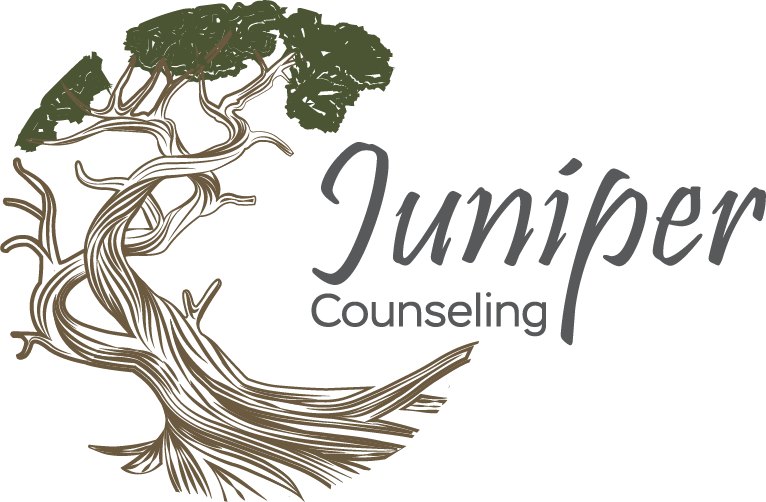
Navigating life after narcissistic abuse can feel like traversing a treacherous terrain, but it doesn’t have to be a journey you take alone. In this blog post, we’ll explore the empowering process of recovering from narcissistic abuse and offer guidance for finding healing, strength, and resilience along the way.
Understanding Narcissistic Abuse
Firstly, it’s crucial to understand what narcissistic abuse entails. Narcissistic abuse is a pattern of manipulation, exploitation, and mistreatment inflicted by individuals with Narcissistic Personality Disorder (NPD) or narcissistic traits. This abuse can manifest in various forms, including emotional manipulation, gaslighting, and verbal or even physical aggression.
Narcissistic abuse fundamentally revolves around control. Narcissists employ a range of manipulative tactics to dominate and manipulate their victims, ensuring they maintain power and authority in the relationship. Whether through gaslighting, emotional manipulation, or exploiting vulnerabilities, the primary goal remains the same: to assert control over the victim’s thoughts, feelings, and actions. By systematically undermining the victim’s self-esteem and sense of autonomy, narcissists establish a dynamic where they hold all the power, dictating the terms of the relationship and suppressing any dissent or resistance. Ultimately, narcissistic abuse is a calculated strategy designed to maintain the narcissist’s superiority and keep the victim subservient and dependent.
Trauma bonding and intermittent reinforcement work in tandem to create a powerful psychological bond that keeps the abused attached to their abuser. Through intermittent reinforcement, the abuser alternates between periods of affection and validation with episodes of manipulation and abuse. This unpredictability fosters a cycle of hope and dependency, as the victim becomes conditioned to crave the fleeting moments of kindness and validation, clinging to the belief that things will improve. Combined with trauma bonding, where the intensity of the abuse amplifies emotional bonds, the victim becomes deeply entangled in a complex web of emotions. Despite the abuse, they may struggle to break free due to feelings of loyalty, fear, and a distorted sense of love. This cycle reinforces the victim’s attachment to their abuser, making it incredibly challenging to escape the toxic relationship.
Isolation is a potent tool in the arsenal of a narcissistic abuser, as it effectively strengthens their control over the victim. By gradually cutting off the victim from their support network of family and friends, the narcissist creates a sense of dependence and vulnerability. This isolation serves to amplify the narcissist’s influence, as the victim becomes increasingly reliant on them for validation, companionship, and guidance. With fewer external influences and perspectives, the victim’s reality becomes increasingly shaped by the narcissist’s manipulative tactics and distorted worldview. The more isolated the victim becomes, the easier it is for the narcissist to exert complete dominance over their thoughts, emotions, and behaviors, further solidifying their control in the abusive relationship.
Due to the deceptive charm of the narcissist, they also manipulate everyone connected to the abused, convincing them that the accusations against the narcissist couldn’t possibly be true. This manipulation leads the abused to feel increasingly isolated and unable to trust their own judgment. Leaving the relationship isn’t just about breaking free from the narcissist’s control; it also involves navigating the potential losses associated with severing ties. It entails grieving the loss of the once-believed perfect match and the envisioned future together. Moreover, there’s the fear of losing social relationships, as the narcissist has likely manipulated others into believing their false persona, putting the victim at risk of losing their social connections as well.
Recognizing the Signs
Narcissistic abuse often begins with love bombing. Love bombing is a manipulative tactic often employed by narcissists as a means of exerting control and gaining power over their victims. It involves showering someone with excessive affection, attention, and flattery in the initial stages of a relationship, creating an intense and overwhelming bond. However, this intense affection is not genuine; rather, it serves as a tool to manipulate the victim into dependence and compliance. As the relationship progresses, the narcissist may gradually reveal their true nature, using emotional manipulation, gaslighting, and other abusive tactics to maintain control. Victims of narcissistic abuse often find themselves trapped in a cycle of idealization, devaluation, and discard, struggling to break free from the toxic dynamic.
Gaslighting is a common technique employed by narcissists. It involves undermining the victim’s perception of reality and making them doubt their own sanity. This insidious form of manipulation can leave survivors feeling confused, isolated, and powerless. Gaslighting often manifests as subtle distortions of the truth, such as denying past events or rewriting history to suit the narcissist’s narrative. For example, a narcissistic partner may downplay or dismiss instances of abuse, leaving the victim feeling as though their experiences are invalid or exaggerated. Over time, gaslighting can erode the victim’s confidence in their own judgment and contribute to feelings of self-doubt and worthlessness. Gaslighting and manipulation can make it difficult to trust your own perceptions, but by educating yourself on the warning signs – such as constant criticism, lack of empathy, and a sense of entitlement – you can begin to reclaim your sense of reality and agency.
Verbal and emotional abuse are also common tactics used by narcissists to assert dominance and undermine their victim’s sense of self-worth. This can include constant criticism, insults, and belittling comments designed to chip away at the victim’s self-esteem and keep them in a state of emotional dependence. Physical aggression is less common but can still occur in extreme cases of narcissistic abuse. This may involve acts of violence or intimidation aimed at exerting control and instilling fear in the victim.
At the core of narcissistic behavior lies an insatiable desire for control, driven by profound insecurity. Narcissists exhibit a striking lack of empathy and compassion, their focus primarily fixated on themselves. Mastering the art of manipulation, they adeptly ensure their own needs are prioritized and met, often at the expense of others’ well-being.
Recognizing the signs of narcissistic abuse is the first step towards reclaiming your sense of reality and agency. By educating yourself on the warning signs and trusting your instincts, you can begin to break free from the cycle of manipulation and reclaim your power. Remember, you are not alone, and there is support available to help you navigate the journey to healing and recovery.
Healing from Narcissistic Abuse
Recovery from narcissistic abuse is a multifaceted process that requires time, patience, and self-compassion. Healing may involve seeking therapy or counseling, joining support groups, and engaging in self-care practices that nurture your mind, body, and spirit. Remember, healing is not linear, and it’s okay to take things one step at a time.
Rebuilding Self-Esteem
Narcissistic abuse often leaves survivors with deep-seated wounds to their self-esteem and self-worth. Rebuilding self-esteem involves challenging negative beliefs about yourself, practicing self-love and self-compassion, and celebrating your strengths and accomplishments – no matter how small they may seem. Through self-reflection and support from trusted individuals or professionals, survivors can gradually cultivate a renewed sense of self-worth and resilience in the aftermath of narcissistic abuse.
Establishing Healthy Boundaries
Setting and enforcing boundaries is an essential aspect of reclaiming your autonomy and protecting yourself from further abuse. Boundaries serve as a line of defense, delineating what behavior is acceptable and what is not, and they provide a framework for maintaining healthy relationships.
Identifying your limits begins with self-reflection and self-awareness. Take the time to consider what you need and deserve in relationships, both personally and professionally. Reflect on your values, desires, and boundaries, and be honest with yourself about what feels comfortable and respectful to you.
Once you have a clear understanding of your boundaries, it’s important to communicate them assertively and confidently. This means expressing your needs and limits directly and without apology, using clear and respectful language. Remember that you have the right to advocate for yourself and prioritize your own well-being and happiness.
Setting boundaries may feel uncomfortable or even intimidating at first, especially if you’re not used to asserting yourself or if you fear negative reactions from others. However, it’s important to remember that boundaries are a fundamental aspect of healthy relationships, and asserting them is an act of self-care and self-respect.
When communicating your boundaries, it’s important to be firm and consistent. Don’t waver or compromise your limits in response to pressure or manipulation from others. Stay true to yourself and your needs, and don’t be afraid to enforce consequences if your boundaries are violated.
It’s also important to recognize that setting and enforcing boundaries is an ongoing process. As you grow and evolve, your boundaries may shift and change, and that’s okay. Be open to reevaluating your boundaries as needed and adjusting them to reflect your evolving needs and priorities.
Ultimately, setting and enforcing boundaries is about reclaiming your power and autonomy in relationships. By honoring your own needs and limits, you send a clear message to others that you deserve to be treated with respect and dignity. And remember, you are worthy of love, respect, and happiness, and you have the right to create relationships that honor and support you in achieving those things.
Breaking Free and Moving Forward
Leaving an abusive relationship is undoubtedly one of the most challenging and courageous decisions a person can make. It requires immense strength, resilience, and determination to break free from the cycle of abuse and reclaim your sense of self and your life. While the process may feel daunting, it’s important to remember that leaving is a necessary step towards prioritizing your safety, well-being, and happiness.
Creating a safety plan is an essential first step in leaving an abusive relationship. This plan should outline practical steps you can take to ensure your safety and security during and after the separation. This may include identifying safe places to go in an emergency, packing a bag with essential items, and securing important documents such as identification, financial records, and legal documents.
Seeking support from trusted friends and family members can provide invaluable emotional and practical assistance during this challenging time. Reach out to loved ones you trust and share your situation with them. They can offer emotional support, help you brainstorm solutions, and provide a safe haven if you need to temporarily leave your home.
In addition to support from friends and family, consider reaching out to local shelters or hotlines for assistance. These organizations are staffed with trained professionals who can offer guidance, resources, and support tailored to your specific needs. They can help you develop a safety plan, connect you with legal and financial resources, and provide access to shelter and other essential services.
Remember, you deserve to live a life free from abuse and full of possibility. You have the right to prioritize your safety, well-being, and happiness, and you are not alone on this journey. By taking steps to leave an abusive relationship, you are reclaiming your power and autonomy and paving the way for a brighter, healthier future.
Leaving an abusive relationship may not be easy, but it is possible, and there is support available to help you every step of the way. You are stronger and more resilient than you realize, and you deserve a life filled with love, respect, and possibility. Don’t be afraid to reach out for help and take the necessary steps to reclaim your self and your life. You deserve nothing less.
Thriving Beyond Narcissistic Abuse
Reclaiming your self after narcissistic abuse is about more than just survival – it’s about thriving. Embrace the journey of self-discovery, celebrate your newfound freedom and autonomy, and open yourself up to the possibility of love, joy, and fulfillment. You are stronger and more resilient than you realize, and the world is full of endless possibilities for growth and transformation.
Recovering from narcissistic abuse is a journey, but it’s a journey that is worth taking. By reclaiming your sense of self, your worth, your agency, and your autonomy – you can create a life that is filled with love, joy, and fulfillment. Remember, you are not alone on this journey, and there is hope, healing, and support available to you every step of the way.
If you or someone you care about is experiencing narcissistic abuse, Juniper Counseling is here to support you. Take the first step on your journey to healing by scheduling a FREE 15-minute consultation today.
Overcoming Imposter Syndrome: Strategies for Embracing Your Achievements
Have you ever found yourself dismissing your accomplishments as luck or fearing that you'll be exposed as a fraud? If so, you're not alone. Imposter syndrome affects countless individuals, causing persistent feelings of inadequacy [read more]
Recover from Narcissistic Abuse and Reclaim Your Self
Navigating life after narcissistic abuse can feel like traversing a treacherous terrain, but it doesn't have to be a journey you take alone. In this blog post, we'll explore the empowering process of recovering [read more]
Your Top Questions About Online Therapy Answered
Online Therapy: Your Top Questions Answered The world of mental health care has undergone a significant transformation with the advent of online therapy. With the convenience of technology, therapy sessions can now take place [read more]











